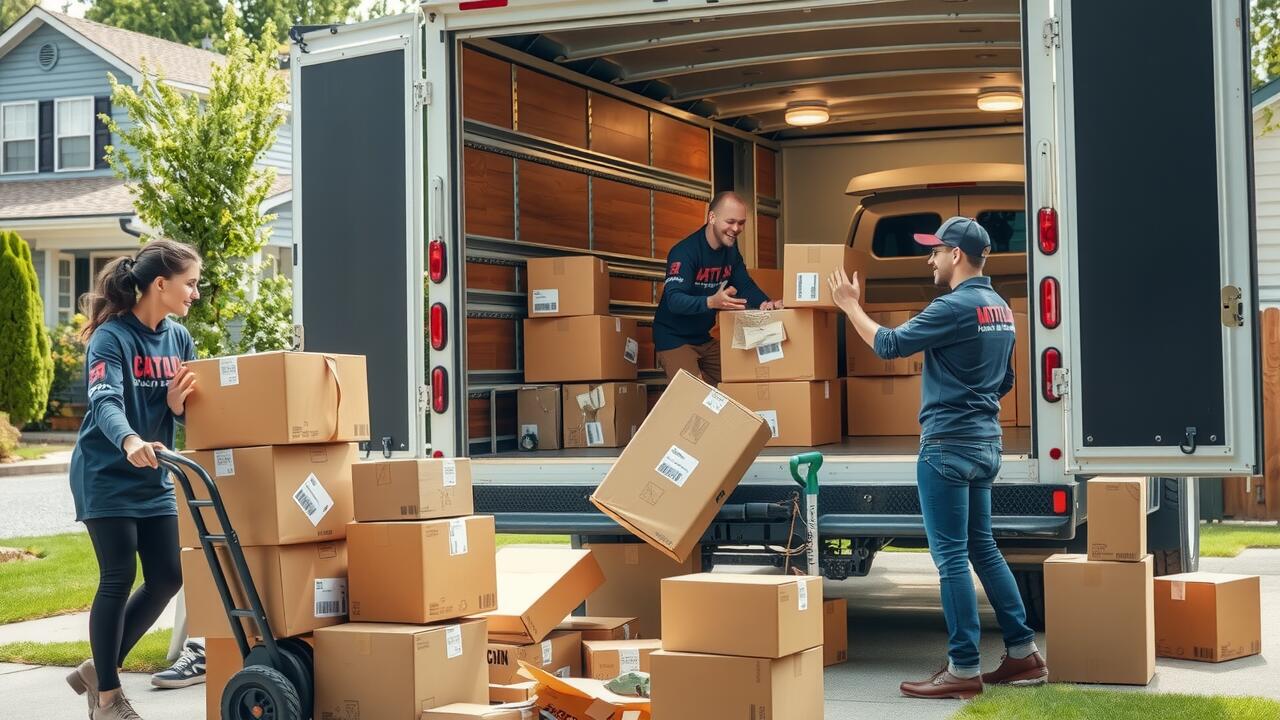
Table Of Contents
Safety Tips During the Moving Process
Moving can be a challenging experience, but prioritizing safety throughout the process can alleviate some of that stress. For those engaging in local and long distance moving in Richland, Washington, it's essential to stay organized and aware of your surroundings. Ensure pathways are clear of obstacles to prevent trips and falls. Always lift items with proper form, using your legs instead of your back. When dealing with heavy furniture, enlist the help of friends or hire professionals to avoid injury.
Proper planning is also crucial for safety. Before the moving day, consider creating a detailed plan that outlines the sequence of loading and unloading your items. Label boxes clearly to avoid confusion when unpacking. If you're renting a truck, familiarize yourself with its size and handling. For additional safety, keep a first aid kit on hand during the move. This preparation will equip you to handle minor injuries efficiently should they occur.
Protecting Yourself and Your Belongings
When planning a move, ensuring your safety and that of your belongings is paramount. Start by gathering proper supplies, including sturdy boxes, packing tape, and protective materials like bubble wrap and blankets. Label each box clearly, as this helps in identifying fragile items and prevents damage during transport. If you’re hiring professional movers for Local and Long Distance Moving in Richland, Washington, make sure they follow safety protocols. They should use appropriate lifting techniques to avoid injuries while handling heavy items.
Additionally, consider your personal safety during the moving process. Wear comfortable clothing and sturdy footwear to protect against slips and falls. It’s also wise to have a designated area in your home for packing and unpacking. Keep aisles clear to avoid tripping hazards. Stay hydrated and take regular breaks to maintain your energy levels. By taking these precautions, you minimize the risk of injury and ensure a smoother transition to your new home.
Loading and Unloading Essentials
When preparing for loading and unloading during your move, consider creating a strategy to maximize efficiency. Begin by gathering all necessary supplies such as packing tape, moving blankets, and dollies. Properly labeling boxes will help ensure that items are placed in the correct rooms upon arrival. By maintaining clear paths and keeping heavy items near the bottom of boxes, you can make the loading process smoother. Additionally, enlisting help from friends or hiring movers can alleviate the physical strain.
Unloading your belongings requires a systematic approach for optimal organization. First, prioritize which items are essential for immediate use, such as kitchen supplies or toiletries. Place heavier furniture first to create a foundation before stacking lighter boxes. During this phase, it's important to check for any damages that may have occurred during transport, particularly with Local and Long Distance Moving in Richland, Washington. By being methodical in unpacking, you can transform your new space into a comfortable home more efficiently.
Best Practices for Safe Transport
When planning Local and Long Distance Moving in Richland, Washington, safety during transportation should remain a top priority. Ensure that items are securely packed in boxes with ample cushioning to prevent shifting. Heavy items should be placed at the bottom of the box, while lighter items can go on top. Label each box clearly, making it easier to identify contents and handle them appropriately. Using furniture pads or blankets can provide the needed protection for larger items, avoiding scrapes and dents.
Proper loading and unloading techniques contribute significantly to a safe moving experience. Make use of a dolly and other equipment designed to assist with heavy lifting. It is important to maintain a clear path both during loading and unloading to prevent trips and falls. Encourage team members to lift with their legs and not their backs to minimize the risk of injury. Staying organized during the transport process will help streamline operations, ensuring that everyone knows their roles and responsibilities.
Setting Up Your New Home
Once you’ve arrived at your new home, organizing your space can feel overwhelming. Start by prioritizing essential items like kitchenware and toiletries. Unpacking these necessities first will help you settle in quickly. As you begin to unload boxes, designate specific areas for different types of belongings. This approach will streamline the unpacking process and reduce clutter. Remember that Local and Long Distance Moving in Richland, Washington, can also offer services for unpacking if you prefer to have some assistance.
Creating a functional layout is crucial in making your new home feel comfortable. Consider the flow of each room and how you plan to utilize the space. Keep furniture arrangements flexible in the early days. This allows you to make adjustments based on how you use each area. Once you have a layout that works for you, focus on organizing your belongings in a way that maximizes efficiency. Labeling boxes and using storage solutions can also contribute to a more organized and inviting atmosphere.
Organizing and Unpacking Efficiently
Unpacking can often feel overwhelming, especially after a busy moving day. To streamline the process, start by prioritizing essential items. Label each box clearly during the packing phase to identify contents easily. This method allows for quick access to important belongings such as toiletries and kitchen essentials without sifting through every box. Designate an area in your new home for unpacked boxes to manage clutter effectively.
Once you have the essentials sorted, tackle one room at a time. Begin with high-traffic areas such as the kitchen and living room. Establish a system for organizing items as you unpack. This approach not only helps in maintaining order but also speeds up the settling-in process. When planning a local move or a long-distance move in Richland, Washington, consider how the organization will influence your home's overall functionality.
FAQS
What should I do to prepare for my local move in Richland, Washington?
To prepare for your local move, start by creating a detailed moving checklist, sorting and decluttering your belongings, and researching local moving companies. It's also essential to gather packing supplies and begin packing non-essential items well in advance.
Are there any specific safety tips I should follow during the moving process?
Yes, some safety tips include wearing appropriate clothing and sturdy shoes, using proper lifting techniques to avoid injury, securing heavy items properly, and ensuring that walkways are clear to prevent tripping hazards.
How can I protect my belongings during the move?
To protect your belongings, use quality packing materials such as bubble wrap, packing paper, and sturdy boxes. Additionally, label your boxes clearly and use padding for fragile items to minimize the risk of damage during transport.
What are the best practices for loading and unloading items?
Best practices include loading the heaviest items first, distributing weight evenly, and securing items with straps or ropes. During unloading, take your time to ensure everything is handled carefully and placed in the appropriate areas of your new home.
What should I consider when unpacking and organizing my new home?
When unpacking, focus on essential items first and organize your belongings by room. Take time to evaluate your storage options and consider creating a designated space for each category of items to maintain organization and ease of access.
